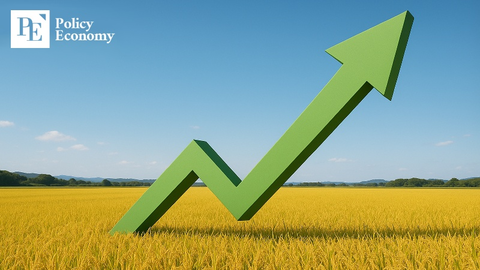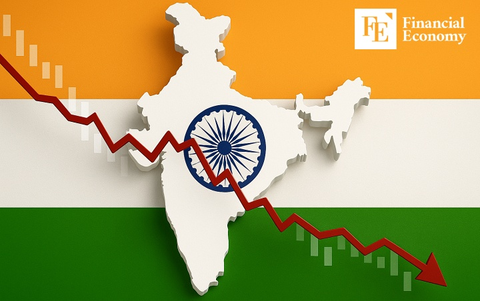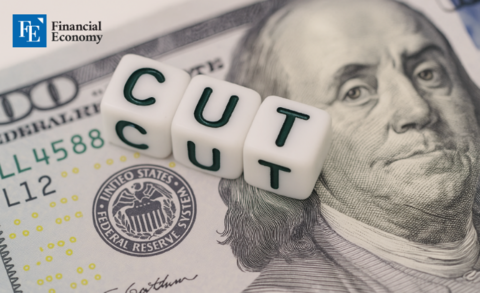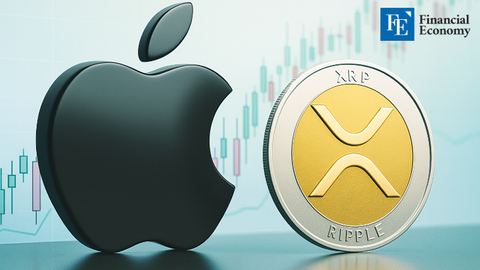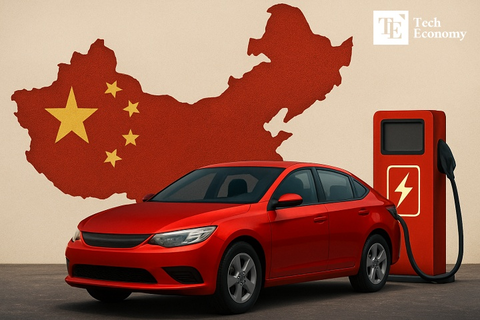Apple, Falling Behind in the AI Power Race, Faces a Threat to Its Golden Era
Input
Modified
Global AI Power Shift Exposes Apple’s Struggles Structural Momentum Falters as Analysts Lower Ratings A Triple Threat: Technology Lag, Policy Pressure, and Investor Doubt
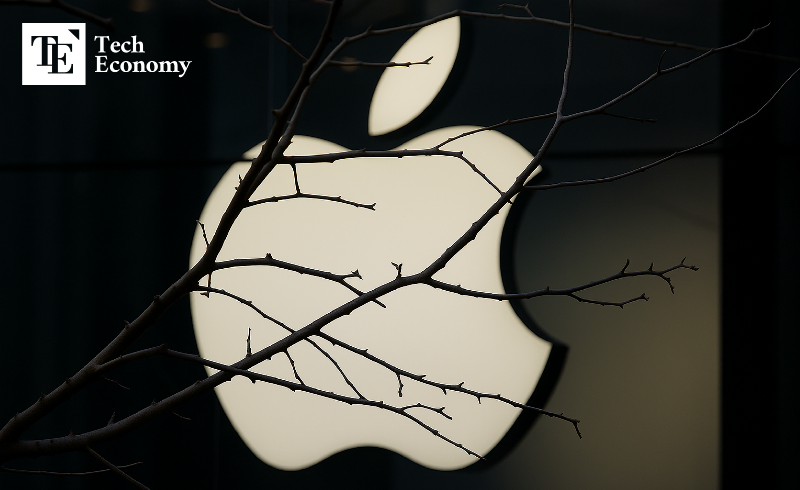
Apple, once the undisputed symbol of innovation and sleek consumer technology, now finds itself facing a storm it did not anticipate. As artificial intelligence (AI) becomes the new engine of global economic transformation, the world's most iconic tech company appears to be slipping behind. While its peers among the M7—Microsoft, Meta, Amazon, Alphabet, Nvidia, and Tesla—forge ahead in the AI arms race, Apple is grappling with investor skepticism, a declining stock price, and intensifying regulatory and political headwinds. What was once seen as Apple’s golden era may be giving way to a period of reckoning.
Investor Confidence Cracks Amid Downgrades and Falling Market Cap
Apple’s market performance is sounding alarm bells across the financial world. On June 4, the company closed at USD 202.82 on the New York Stock Exchange, marking a decline of nearly 19% since the start of the year. Its market capitalization has shrunk to USD 3.029 trillion, now barely hovering above the USD 3 trillion line it once confidently surpassed. While four members of the M7 have posted negative returns so far this year, Apple stands out for having the steepest drop.
Tesla, despite a one-day drop of over 3%, has declined just over 17% year-to-date—slightly better than Apple’s performance. Alphabet and Amazon have each seen drops of over 11% and 5%, respectively. Meanwhile, Meta has surged 17%, and Nvidia, now the most valuable public company, has gained 5.3%. Even Microsoft, which lost the top market cap spot to Nvidia, has grown by over 10%.
Yet despite Apple’s underwhelming trajectory, some investment banks argue that the company remains overpriced. Analysts point to its price-to-earnings ratio, which currently sits at about 26 times projected earnings per share for the fiscal year—still high for a company with such visible growth concerns. These analysts believe the market has not fully accounted for weak performance in China, where Apple’s iPhone sales have notably softened.
This growing concern has been reflected in a series of downgrades. Needham shifted Apple’s rating from “Buy” to “Hold,” and erased its previous USD 225 price target. Jefferies also cut its rating earlier this year, lowering Apple from “Hold” to “Underperform,” citing the brand’s weakening foothold in China. At the same time, Loop Capital revised its outlook from “Buy” to “Sell,” citing supply chain research that suggested iPhone demand was falling faster than expected.
AI Missteps and Apple Intelligence Backlash
Behind the financial anxiety lies a deeper concern: Apple’s failure to keep pace in the AI race. While competitors are rapidly integrating generative AI into their ecosystems and products, Apple has been slow to act. Analysts and insiders alike believe that the company is trailing far behind in AI development—a sentiment echoed internally by senior engineers. Some even admit that the company is in a state of decline, suggesting Apple may be drifting toward irrelevance if it doesn’t reverse course soon.
Perhaps the starkest warning came from Eddy Cue, Apple’s Senior Vice President of Services, who reportedly remarked that the iPhone could disappear within a decade—just as Apple itself once made Nokia’s dominance obsolete. This dramatic prediction underscores how deeply Apple’s leadership is aware of the existential threat posed by falling behind in AI.
The centerpiece of Apple’s troubled AI journey is Apple Intelligence, a service born more out of urgency than strategy. The project was not even under consideration before OpenAI’s ChatGPT upended the market. Once ChatGPT’s influence became undeniable, Apple scrambled to produce its own response. What emerged late last year was Apple Intelligence—an AI model developed in haste, without the methodical innovation Apple was once known for.
From the outset, the results were troubling. The product launch was delayed and rushed simultaneously, resulting in numerous glitches, performance failures, and public backlash. The company faced criticism for misleading promotional claims, and each software patch seemed to fix one bug only to introduce several new ones. Some industry experts went so far as to describe the product as a technological embarrassment. For Apple—a brand synonymous with polish and perfection—this was an unfamiliar and unsettling reputation.
As speculation about the eventual decline of the smartphone intensifies, Apple’s weaknesses are becoming more exposed. The company, once praised for leading with bold technological vision, is now seen by some as surviving on design aesthetics and the loyalty of its ecosystem rather than true innovation. In the fast-evolving world of AI, such a posture could prove fatal.

Ecosystem Under Siege and Tariff Threats from Trump Add to the Storm
As Apple stumbles in AI, its heavily guarded ecosystem—long a source of competitive advantage—is now under regulatory assault. In March, the European Commission ordered Apple to ensure greater interoperability between its devices, including the iPhone and iPad. Citing the Digital Markets Act, the Commission argued that breaking down walled gardens would create a more open environment for developers, expand consumer choice, and drive innovation.
This move targeted Apple’s famously closed ecosystem head-on. In response, Apple filed a lawsuit against the EU’s General Court in Luxembourg at the end of May. The company argued that the mandated changes were impractical and cost-prohibitive. It also warned that such requirements could compromise user privacy and security by allowing competitors access to sensitive information. Apple maintained that singling out its ecosystem for regulation would limit its ability to innovate and ultimately result in a degraded experience for European consumers.
But the pressure on Apple is not limited to Europe. In the United States, Donald Trump’s reemerging trade policy is threatening to disrupt the company’s supply chain. After initially proposing reciprocal tariffs on imported goods in April, Trump later announced plans to impose a minimum 25% tariff on smartphones manufactured outside the U.S.
He made it clear that he expected Apple to bring its production home, having previously informed CEO Tim Cook that iPhones sold in America should be made in America—not in India or any other foreign country. Trump warned that if Apple failed to comply, it would face heavy tariffs.
This reversal in policy has created significant uncertainty for Apple. However, experts believe the likelihood of the company relocating its production to the U.S. in the near future is slim. Analysts estimate that a full-scale move could take five to ten years, during which time the cost of producing an iPhone in the U.S. could drive retail prices to an eye-watering USD 3,500 per unit—an outcome that would alienate millions of consumers and further weaken Apple’s global competitiveness.
Apple today is no longer shielded by its legacy. The company is under pressure from every angle: a flailing AI strategy, shaken investor trust, external demands to dismantle its tightly held ecosystem, and political threats that could inflate costs and shatter supply chains. What once looked like an endless winning streak is now clouded with doubt. Whether Apple can course-correct and reassert itself as a leader in the age of artificial intelligence remains uncertain—but the urgency to act has never been greater. Its golden era may not be over yet, but the clock is undeniably ticking.

